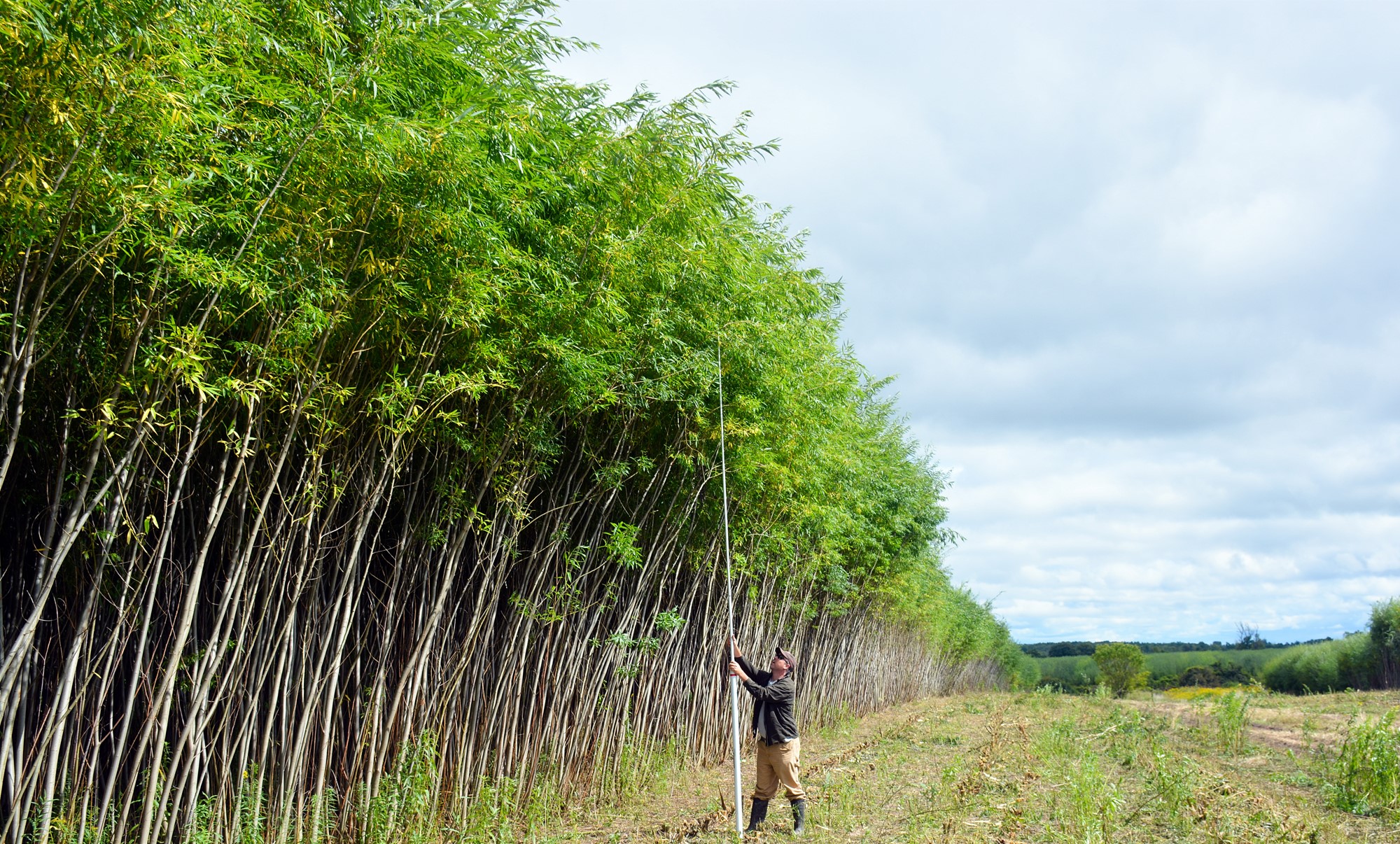Recent Headlines

A researcher measures shrub willow to see if it's ready to be harvested for biomass.
SUNY ESF Receives USDA Grant
SUNY College of Environmental Science and Forestry (ESF), as a member of a mid-Atlantic consortium, has received $630,000 over five years from the United States Department of Agriculture (USDA) to develop biomass systems and products with the potential to put abandoned lands and people back to work. The Mid-Atlantic Sustainable Biomass for Value-Added Products Consortium will deliver a sustainable and economically feasible system to facilitate development and commercialization of bioproducts and the rural bioeconomy. In total, the USDA awarded $10 million.
Co-principal investigator Tim Volk, senior research associate at ESF, will collaborate with Tristan Brown, associate professor at ESF, and scientists from universities, industry partners and national laboratories, including West Virginia University, Virginia Polytechnic Institute & State University, Penn State University, the USDA Forest Service and Forest Products Laboratory, USDOE Oak Ridge (ORNL) and Idaho (INL) National Laboratories, Mid-Atlantic Technology, Research and Innovation Center, Lignetics, Allegheny Wood Products, Eastern Biochar, Tucker Engineering, Torresak, Lanzatech, and Norris Thermal Technologies.
"Biomass crops like shrub willow are an ideal solution," said Volk. "They do not add carbon dioxide to the atmosphere as they absorb the same amount of carbon in growing as they release when consumed as a fuel. This biomass can be used to replace fossil fuels for heat and power or as biofuels for transportation. Our goal is to grow these biomass crops on former mine land and other marginal land in the region … land that is otherwise not being used for anything. If we can do this, we are, in essence, turning the land into a renewable energy resource."
"The multi-agency, interdisciplinary initiative includes a variety of projects. An ESF team led by Volk will compare two harvesting systems to determine which is more efficient for the low-quality, marginal land under consideration.
"There are at least 10 million acres of abandoned mine lands that could be helped by biomass products developed through this consortium," said Volk. "We're looking at two machines that could be used to harvest crops produced on this land, considering factors like the size and shape, and the ideal piece of machinery to handle those realities."
In addition, researchers at ESF led by Associate Professor Tristan Brown will conduct an economic analysis to determine which areas of the process can be adjusted to reduce production costs of biomass products.
"ESF will also partner with other universities to create online courses to improve general knowledge about biomass production and inspire the next generation of researchers to investigate 21st century possibilities," said Volk.
An annual project will be conducted across four universities, inviting undergraduate students to collaborate virtually on a biomass project. In addition, each summer, a student cohort will travel to one of the universities to conduct biomass-specific research on-site.
"Ultimately, the idea is to repurpose abandoned land and to create jobs in rural environments around that land using biomass and lower our carbon footprint," said Volk. "To be successful, we need to pull together an entire program, with the depth and breadth of expertise that resides across each of the member organizations."